Like the two other National Museums (National Museum of Fine Arts and National Museum of Anthropology), the National Museum of Natural History is housed in the former Department of Tourism building in Rizal Park near the Agrifina Circle.
All three museums are within walking distance to each other, making them easily accessible to the public. This somewhat alludes to the Smithsonian Institution in Washington, D.C. being surrounded by important landmarks of the United States.

National Museum of Natural History
In retrospect, the National Museum of Natural History focuses on the biodiversity and ecosystem of the Philippines. The exhibits are mostly taxidermized animals that are local to our country in a bid to preserve seemingly lost treasures. The usual suspects such as the Philippine eagle and a real-life replica of Lolong, the largest saltwater crocodile in captivity, can be found here.
If you haven’t been living under a rock the past few days, you might have already seen the numerous photos of the “Tree of Life” in the middle of the main atrium. It’s basically an elevator that brings you up the fifth floor, granting you an amazing bird’s-eye view of the museum. From there, you work your way down.

The “Tree of Life” at the center of the National Museum of Natural History
Aside from the fascinating exhibits, the museum is interactive and encourages hands-on activities for children such as drawing tables. The National Museum of Natural History and the other two museums are positive developments in a country overwhelmed with political atrocities. This easily marks itself worthy of visit.
How to prep for a museum visit
Bringing a car? Good luck with parking
Before visiting the museum, it would be a good idea to consider the time and day you wish to go. You can try parking beside the National Museum of Natural History across Manila Doctors but this is also used by patients of the hospital so it might be tough here. If you’re planning to visit all three museums, the Fine Arts Museum has parking along its driveway but no shade is available. The last spot to find parking would be beside the Anthropology Museum, which has some shaded spots but they are limited as well. Ultimately, it would be much easier to commute.
Lines tend to get pretty long
Access to the museum is gauged by the number of people in line. Think of it as a club and the bouncer only lets a certain number of people in at a time. If you aren’t in a rush to visit, try and wait for the hype to die down to avoid the line, which sometimes goes all the way down the steps. Besides, not all exhibits are up yet so might as well wait to get the full experience.
Avoid bringing a bag
Another reason the line gets long is that security is tight. After going through a metal detector and X-ray machine, all bags are surrendered. The line for this is long; as much as possible, take your valuables with you so making a second trip to baggage claim won’t take too much of your precious museum time.
Patience is indeed a virtue
A line to get in, a line for security check, and a line to deposit your bag. This is the part that will take up the most time but once you get through this, it’s all easy breezy after. Nature might also add up to your stress considering summertime sun or the rain that will come in a few months. Be prepared for weather and the wait.
Inside the National Museum of Natural History
Congrats, you’re finally in. It is the first steps to heaven after what seemed like purgatory. P.S. Please tell us you followed our advice or else you’re going to have to line up again to deposit your stuff.
The museum’s vibe is very welcoming to say the least. If you’re familiar with the game Horizon Zero Dawn, the museum’s mixture of modern architecture and exhibits from nature actually give it a similar vibe (I’m exaggerating). Putting aside the exaggeration, the museum’s one of a kind aesthetic makes the visit very light and soothing. With the “Tree of Life” being amazing at its job as the centerpiece, the glass fixture of the museum’s ceiling also allows sunlight to cast patterns on the floor.
Museum personnel recommend visitors take the elevator to the top floor and slowly work their way down. Sadly, as of the moment, only exhibits up to the third floor are available for public viewing. Hence, we insisted starting at the bottom, where illustrations of local animals such as the Philippine eagle, tarsier, and carabao hang around the museum walls.
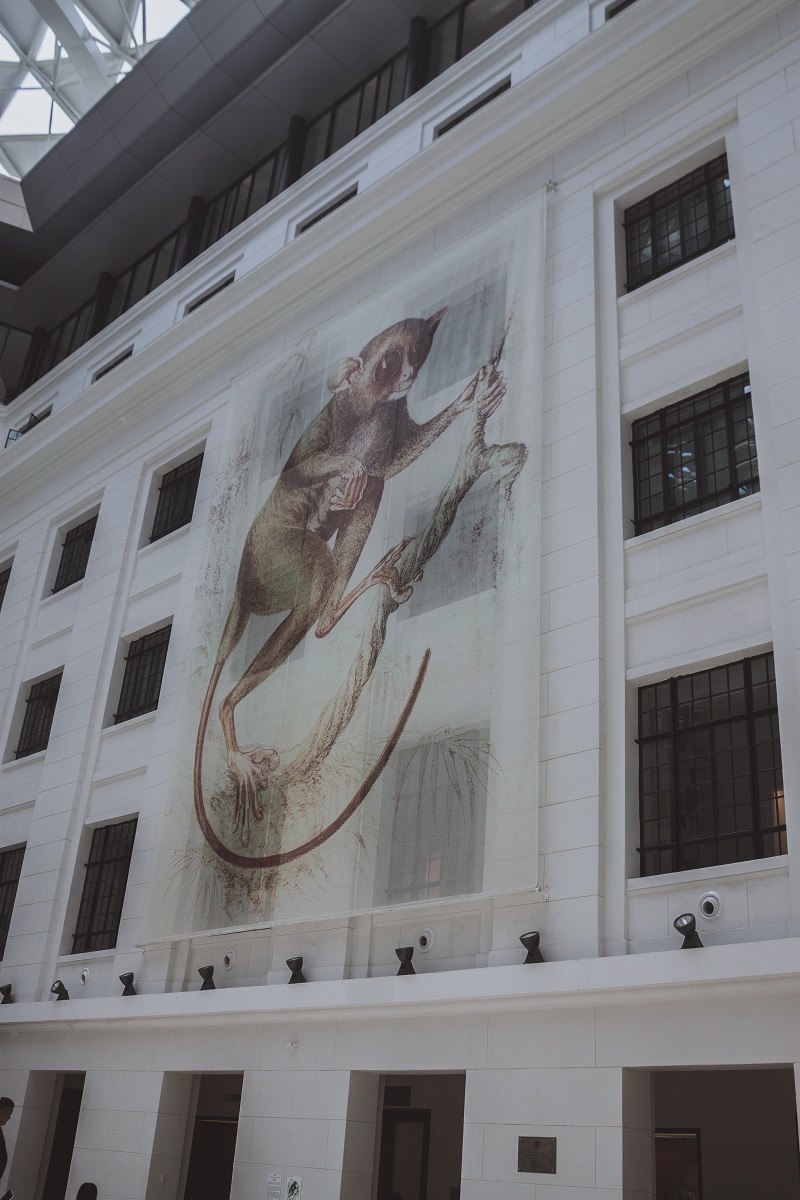
An illustration of a tarsier
As if these attractions weren’t enough to welcome you to the building, a sculpture of national hero Jose Rizal’s head is displayed. The first floor showcases a variety of taxidermized species comprising mostly of different Philippine eagles. As you make your way up the Tree of Life foyer, prepare to see mass gains. A replica of Lolong, the largest recorded crocodile in captivity is there. To give you an idea of how big he is, an average man can fit in his stomach with a plus one and space to spare.
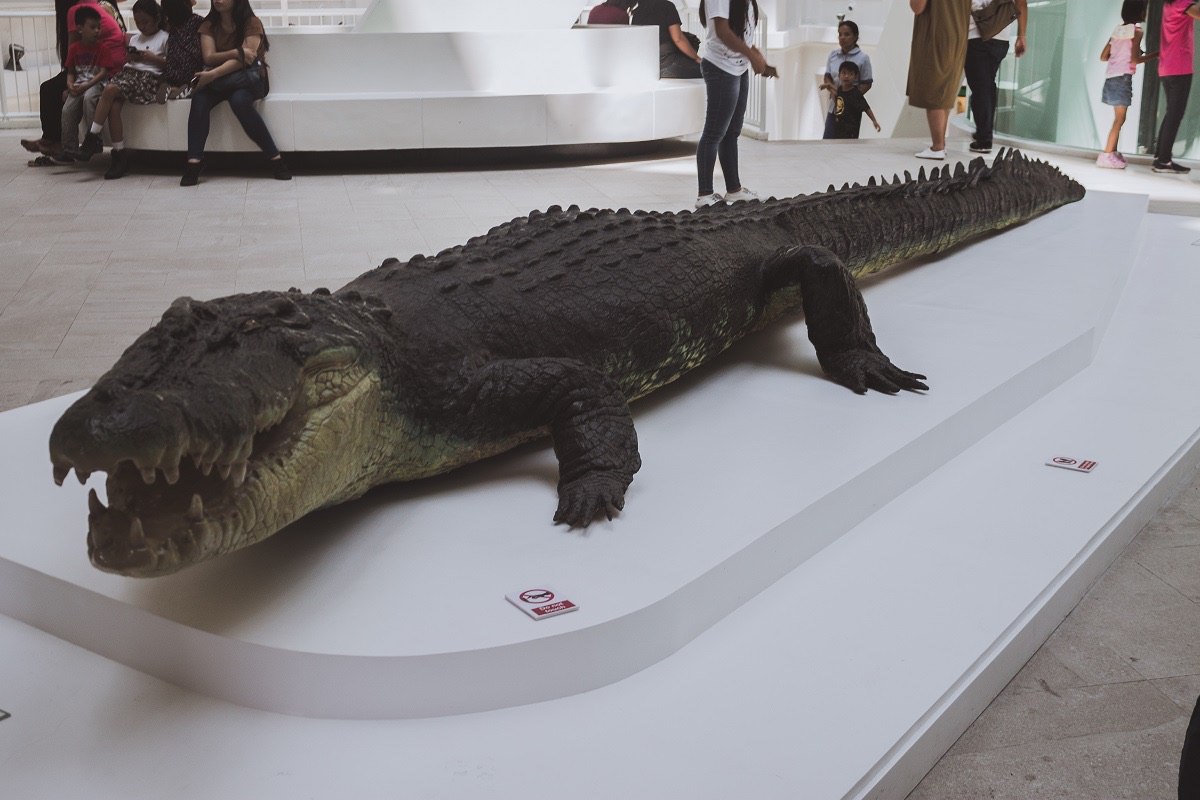
Lolong
As you make your way up the second floor, the museum starts to get more interactive. You’ll see videos, guides, diagrams, and illustrations emphasizing the richness of our environment. By engaging with visitors through different types of interactive setups, the museum is actually built to have a conversation with you.
A digital version of the globe shows how the Earth was affected by different environmental factors such as the eruption of Mt. Pinatubo in 1991. This section of the museum doesn’t only show how beautiful our environment is but it also shows the consequences of abusing nature.
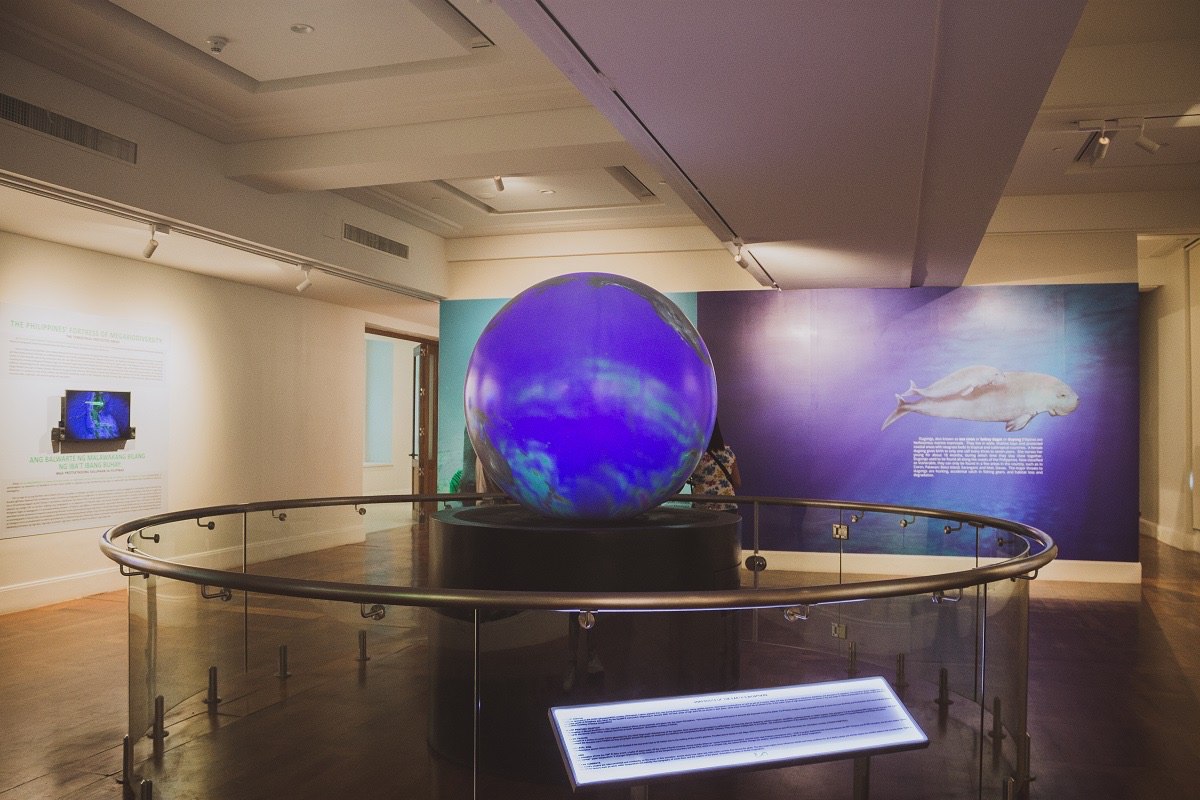
A digital Earth?
If you haven’t had enough of the killer croc, you’ll also be able to see his actual skeleton in the Ayala Reception Hall.
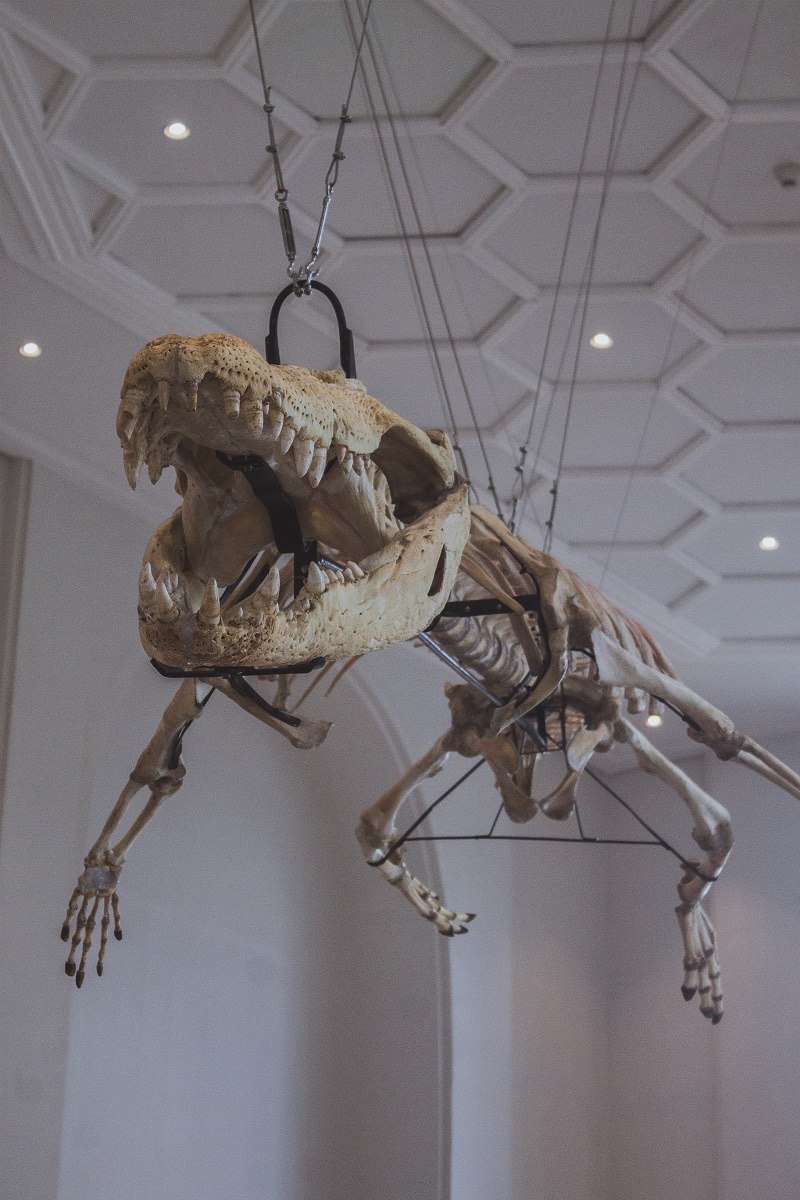
Crocodile skeleton
Similar to the exhibit located on the first floor, different types of flora and fauna can also be found in the following section. Even though the museum is filled with scientific exhibits, visitors can also can get in touch with their artsy and philosophical side. This side of the museum also showcases a little bit of history as we get to know more about Ferdinand Magellan’s batchmates. Dating back to the Age of Exploration, the works of pioneering naturalists of the country are displayed in this section. The museum also has a section where visitors can actually trace and illustrate sample leaves.
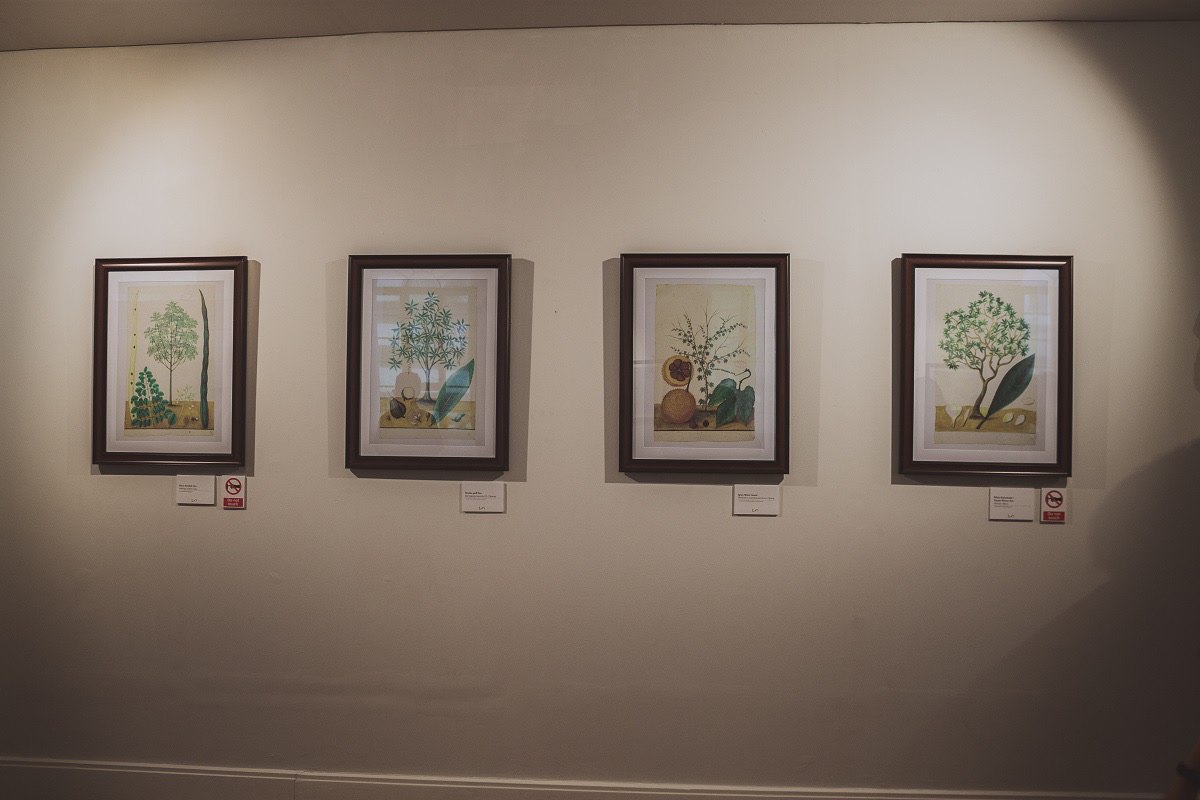
Sample leaves on display
The final part of the museum is divided in two parts: a mini mangrove and a marine life exhibit. The marine life exhibit submerges you (figuratively) under the sea. An interactive submarine welcomes you as you enter, and different videos of underwater creatures can be seen through its windows.This under-the-sea section also includes preserved specimens ranging from crabs to turtles, and displays giant figures of a manta ray, dolphin, and whale shark.
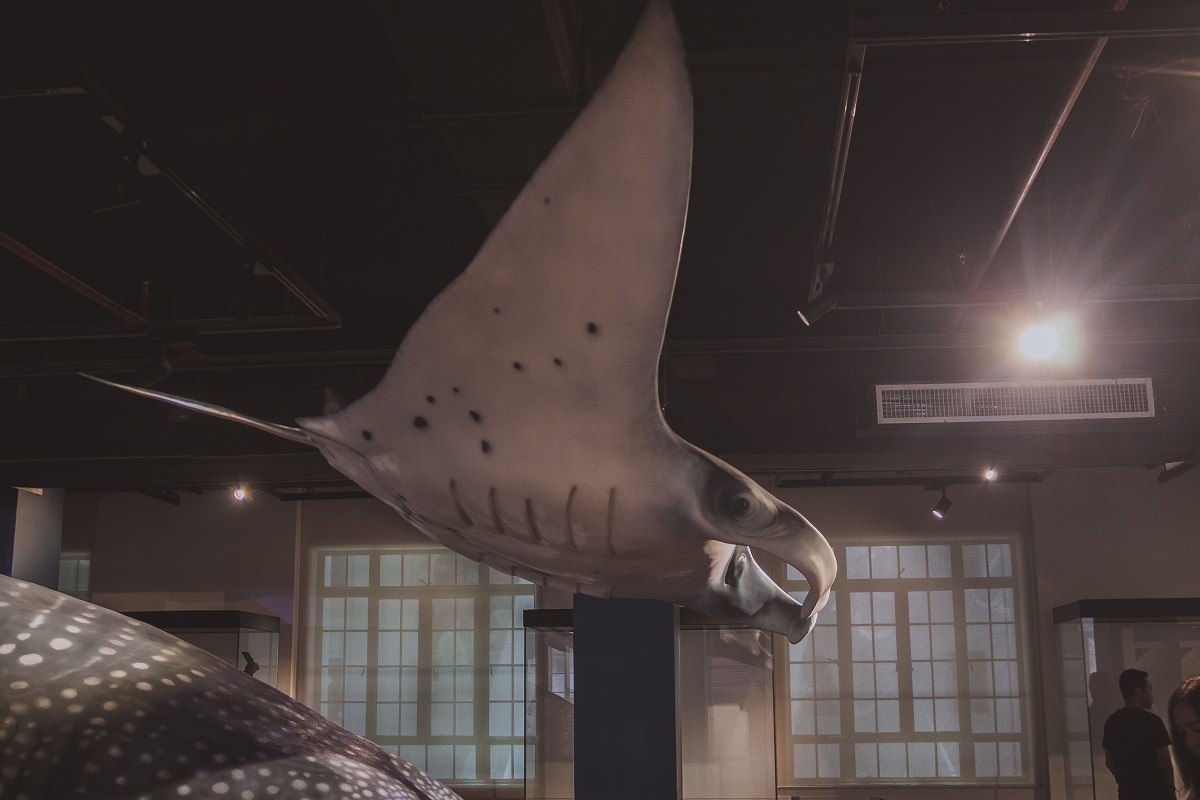
A flying manta ray?
Similar to the marine life exhibit, the mangrove exhibit also includes specimen that have made mangroves their natural habitat. The gallery also recreates different types of beaches and how they all play a role in the sustaining the environment.
Takeaway and advice
By now you should know that the museum is an amazing effort, even with three more floors of exhibits to open. Of course, no museum guide would be complete without a little advice to maximize your visit.
Don’t go in just to take selfies
Museums are sanctums of creativity and purpose, not selfies (though you are free to do so, of course). Although we don’t have anything against selfies, it is a shame to reduce works of art into a background. Reevaluate your intent and give way to people who actually want to learn and immerse themselves in the exhibits. On first glance, the exhibits and figures inside the museum may look appealing and tempt you to take pictures but they are more than that. Be considerate and appreciate them for what they are.
Observe museum etiquette
As mentioned previously, you’ll need a lot of patience. You’ll see a lot of people cutting lines for their own convenience, touching artworks that aren’t supposed to be touched, and people who are just being plain insensitive and rude. Minimize your noise, don’t ruin the exhibits, and just be respectful. It’s going to be hard seeing rowdy people but be a good sport and don’t contribute to that.
Leave with respect for nature
With all the bad things happening to our environment, the National Museum of Natural History’s main purpose is to inculcate an appreciation and interest for nature and its preservation. The intense heat is a clear-cut example of Mother Nature crying for help, yet we refuse to take care of it. Hopefully as we enter the museum with an open mind and a never-ending sense of wonder, we leave with the utmost respect and regard for life and the environment.
























Comments